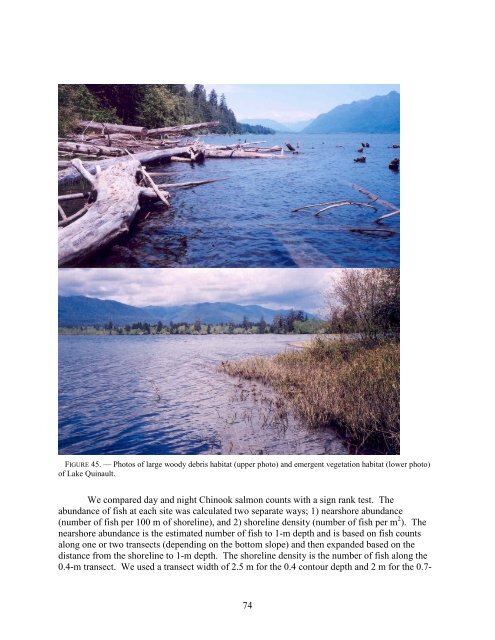Nearshore Habitat Use by Juvenile Chinook Salmon in Lentic ...
Nearshore Habitat Use by Juvenile Chinook Salmon in Lentic ...
Nearshore Habitat Use by Juvenile Chinook Salmon in Lentic ...
Create successful ePaper yourself
Turn your PDF publications into a flip-book with our unique Google optimized e-Paper software.
FIGURE 45.—Photos of large woody debris habitat (upper photo) and emergent vegetation habitat (lower photo)<br />
of Lake Qu<strong>in</strong>ault.<br />
We compared day and night <strong>Ch<strong>in</strong>ook</strong> salmon counts with a sign rank test. The<br />
abundance of fish at each site was calculated two separate ways; 1) nearshore abundance<br />
(number of fish per 100 m of shorel<strong>in</strong>e), and 2) shorel<strong>in</strong>e density (number of fish per m 2 ). The<br />
nearshore abundance is the estimated number of fish to 1-m depth and is based on fish counts<br />
along one or two transects (depend<strong>in</strong>g on the bottom slope) and then expanded based on the<br />
distance from the shorel<strong>in</strong>e to 1-m depth. The shorel<strong>in</strong>e density is the number of fish along the<br />
0.4-m transect. We used a transect width of 2.5 m for the 0.4 contour depth and 2 m for the 0.7-<br />
74
















